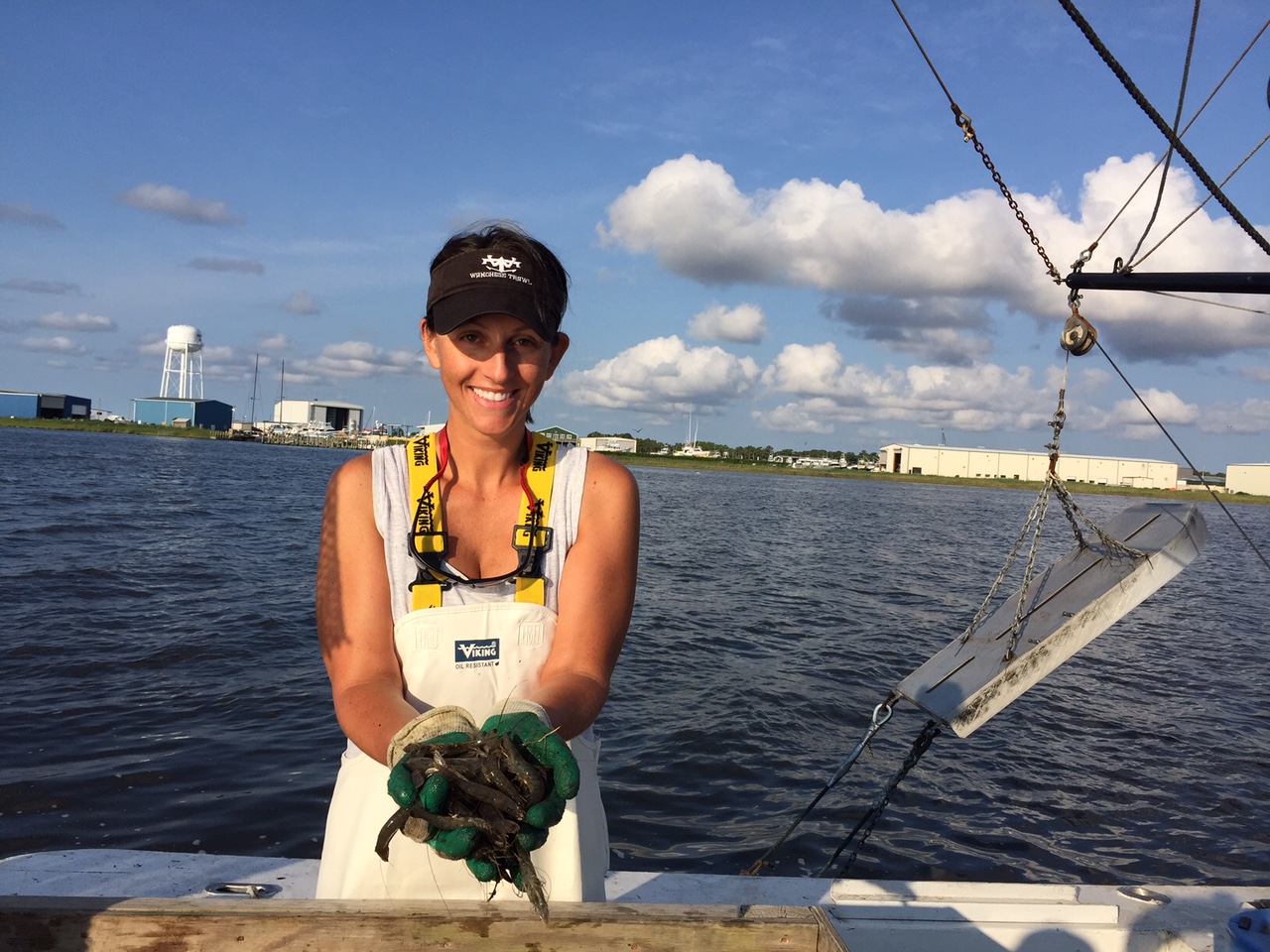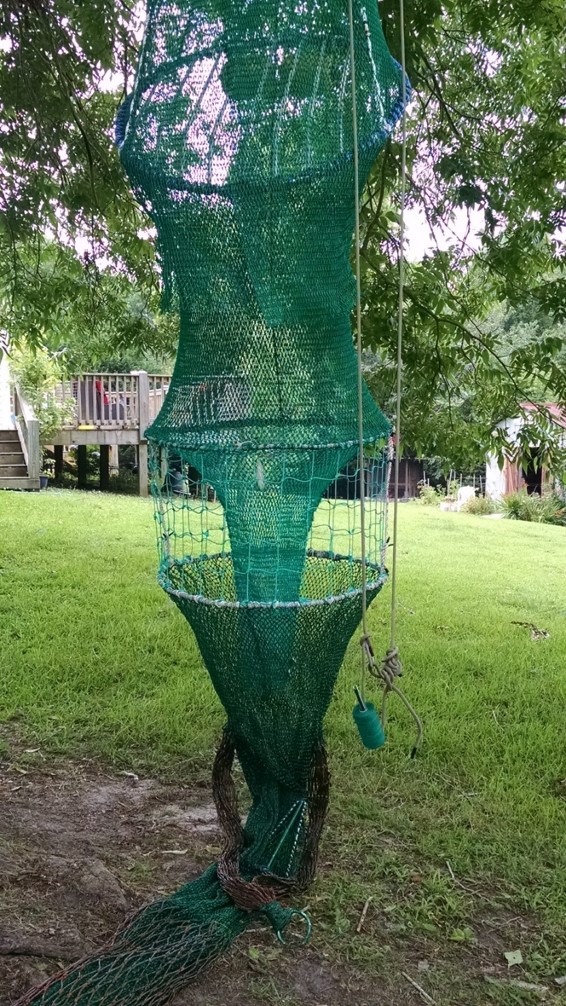
Sara Mirabilio sorts through the catch on a shrimp trawl. Photo by Micah Daniels.
One fish, two fish, red fish … no fish!
That’s the research objective for a team of scientists I’ve been working alongside since winter 2014: develop technical solutions to reduce bycatch in the North Carolina shrimp trawl fishery. We want to “rewrite” that old Dr. Seuss nursery rhyme; no blue fish, please.
At its business meeting in February 2014, the N.C. Marine Fisheries Commission addressed bycatch, fisheries habitat and conflict among user groups in the state’s shrimp fishery. The Commission selected preferred management strategies that would comprise Amendment 1 to their Shrimp Fishery Management Plan, or FMP.
Bycatch refers to fishery discards, retained incidental catch and unobserved mortalities resulting from a direct encounter with fishing gear. The amended FMP called for an industry work group to guide testing of bycatch reduction devices, or BRDs, which are any gear or trawl modification designed to allow finfish to escape from a shrimp trawl.
The Commission set a target reduction of 40 percent above and beyond the 30 percent federal mandate currently required of the industry. Thus began a partnership between the N.C. Division of Marine Fisheries (DMF), National Oceanic and Atmospheric Administration’s Fisheries Service (NOAA Fisheries), North Carolina Sea Grant, and members of the commercial fishing industry.
The industry work group has 12 members representing shrimpers, net makers and industry leaders from all parts of North Carolina’s coast. In fall 2014, the Commission awarded Conservation Fund funding to DMF to convene the group and to begin industry testing of BRD candidates in the 2015 summer brown shrimp fishery. Participants from the shrimp industry provided matching support. The team received additional money from two organizations: NOAA Fisheries’ Bycatch Reduction Engineering Program to test BRD prototypes in the 2016 summer brown shrimp fishery, and the National Fish and Wildlife Foundation’s Fisheries Innovation Fund, which enabled testing of the BRD prototypes in the 2016 fall white shrimp fishery. Both grant programs require proposals to be reviewed by a panel of subject-matter experts.
These field tests have been great examples of industry-driven, cooperative research. Since the first meeting, the group has freely discussed potential BRD candidates, and together they selected the most promising prototypes to be tested by the shrimp industry. The dialog has proven useful, resulting in the testing of gear technologies and novel fishing practices that have a high likelihood of reducing bycatch at a level exceeding the Commission’s benchmark. The research team presented preliminary findings at the industry work group’s public meeting on Jan. 9 in New Bern.

The “Virgil Potter” bycatch reduction device is a radial escape section of 8.5-inch stretch mesh, five meshes long by 27 meshes around. The funnel is 1.5-inch stretch mesh, 30 meshes long by 100 meshes at forward opening; 42 meshes at aft opening. Photo by Blake Price.
Here are some of the results:
All testing occurred in the central, deepwater portion of the Pamlico Sound in areas that are typically fished by the shrimp industry.
The research methodology follows the steps laid out in NOAA Fisheries’ Bycatch Reduction Device Testing Manual (2008). The manual establishes a standardized process for evaluating the ability of BRD candidates to meet the federal bycatch-reduction criterion to be certified for use by southeastern shrimp fishermen in federal waters. Collecting data in this manner will allow NOAA Fisheries to consider all of these gear evaluations for certification, making these efforts not just a benefit to North Carolina fishermen but to all shrimpers in the South Atlantic and the Gulf of Mexico.
This research is producing rare “win-win” solutions: conserving species while also improving the operational efficiency of shrimp trawls. Hauls with a lot of bycatch reduce trawler fuel efficiency and increase the time needed to manually cull the catch. In some instances, high bycatch-to-shrimp ratios may result in bruised or crushed shrimp, producing an inferior-quality product.
Through research efforts like these, we one day hope to experience what comes later in Dr. Seuss’ One Fish, Two Fish, Red Fish, Blue Fish:
We see them [fish] come.
We see them [fish] go. [Out of trawl nets, that is!]
At the Jan. 9 industry work group meeting, I gave an overview of the scientific methods that have been used to date. Researchers from NOAA Fisheries and DMF presented preliminary results for 2016.
For reports of previous Sea Grant-funded research on shrimp trawl bycatch and the effects of shrimping on habitats, visit ncseagrant.ncsu.edu/shrimp-projects.